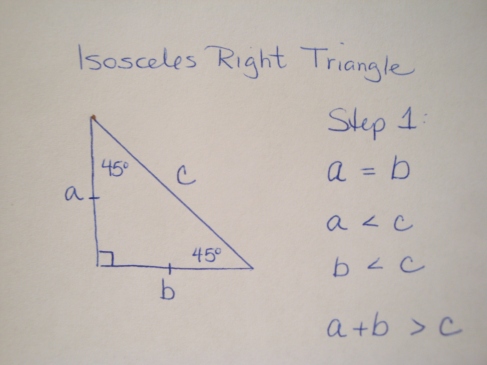To factor a quadratic equation, you first must make sure the equation is set equal to zero. This is done because the factors are leading us to find the x-intercepts, and the x-intercepts occur when the y-value of the ordered pairs is 0. So, even though your equation may not have a y in it, you must bring all terms to one side of the equation and set it equal to zero. If you are just factoring a quadratic expression, you need not worry about this, you simply factor the expression given to you.
For example, x2 + 5x = -6 must be rewritten by adding 6 to both sides, resulting in x2 + 5x + 6 = 0. NOW you are ready to factor.
To factor a trinomial such as the one above, you need to “think backwards” and remember the process for multiplying binomials. It is like a puzzle to figure out what numbers and variables will fit into the four “slots” so that when multiplied the result is the given trinomial.
Using the above example, you need to consider the constant first. Where did that constant come from? It was the result of multiplying the two constants in the two binomials. So we must find numbers that multiply to the constant of +6. But there are two choices: 1 & 6, or 2 & 3. How do you know which pair, and which order? This is the second piece to the puzzle. When you multiplied the binomials using the FOIL method, the middle term was created when you combined like terms. So we need to find the pair that combines to 5. That would be 2 & 3.
Now you are ready to plug the values into the slots. The “First” slots would multiply to give you the first term of the trinomial, so x & x. The “Last” slots are the 2 and 3 discovered above. Your factorization is (x + 2) (x + 3) = 0. The commutative property also allows (x + 3)(x + 2) = 0 to be an alternately correct answer.
That one was pretty easy. Now let’s try one a little more challenging. Let’s try one with negative numbers in it. To factor x2 -7x + 6 = 0, you need to follow the same procedure, and you still need to find numbers that multiply to 6, but now they must combine to -7. We need to consider the factor pairs that have negatives in them: -1 & -6 will multiply to +6, and -2 & -3 will also multiply to +6. The first pair is the pair you need, because -1 + -6 = -7.
Your factorization would be (x -1)(x -6) = 0.
Now for one last challenge. What if you were asked to factor x2 -5x -6 = 0? Now you need factors that multiply to NEGATIVE 6. This calls for one positive and one negative number in each pair. This creates FOUR possibilities:
-1 and +6
+1 and -6
-2 and +3
+2 and -3
We need the pair that combines to -5. That would be +1 and -6. Your factorization is (x + 1) (x – 6) = 0
The process of factoring a trinomial is really nothing more than thinking backwards and figuring out the reverse FOIL puzzle.
Discussion questions:
Did paraphrasing the words help you internalize the concepts more?
To be completely honest, I have taught this concept so many times, I do not need to internalize it more. That being said, I do believe the activity of paraphrasing (or journaling) about a procedure has its merits in terms of helping students to internalize the concept. I will explain how I use this type of writing activity as an introduction to factoring using a game with a regular deck of cards below. I believe having the students reflect on their thought process is a valuable activity and helps them internalize WHY they made the choices they did in solving the problem.
How can you apply this type of exercise in a lesson for your own students?
When I am ready to teach factoring trinomials of the form x2 +/- bx +/- c, I have the students pair up and play a card game, and then write about their findings and the patterns they discovered. The game is simple. The only supply needed per pair of students is a deck of regular playing cards with the face cards and jokers removed (with advanced students you could assign the values of 11, 12, and 13 to the face cards, but that adds a layer of thinking – I like to just stick with ace (one) through ten). Red cards are negative numbers (think of the phrase being “in the red”) and black cards are positive numbers (“in the black”). Shuffle the cards well. Student A draws two cards from the pile. Student A tells Student B what the product and sum of the cards is. Student B must tell Student A what the two cards are.
For example: product is -32, sum is 4. Answer: Black 8, Red 4 (different colors produce a negative product, more positives will produce a positive result when combined. +8 + -4 = +4). Students record their results in a chart. After each student has played ten rounds in each position, each student individually journals how to find the answer to the problem and what little “tricks” they learned along the way to guess quicker and more accurately. The next day, I introduce factoring and equate it to the card game.












